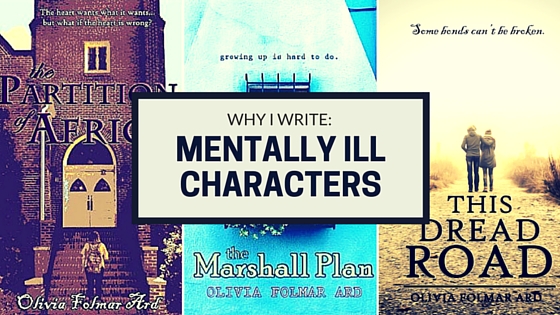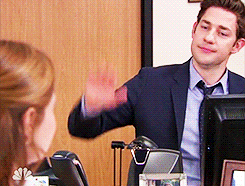
She grabbed her purse and fumbled around it desperately. Her hands were shaking so much she could barely control them, but her fingers finally closed over what she’d been looking for. She withdrew the small plastic bottle, removed the lid with a quick twist, and popped a tiny yellow circular pill into her mouth. She let it rest on her tongue for just a second before she swallowed and closed her eyes in gratitude, like a penitent receiving a communion wafer. The pill left a bitter taste on her tongue, but she didn’t care because she knew the unpleasant flavor heralded the arrival of chemical bliss. Her heart rate slowly but steadily lowered, and she found it easier to breathe.
When she opened her eyes, she found Cameron staring at her, the stubby piece of chalk dangling from his fingers and leaving smudges of powdery residue on his blue jeans. He didn’t look smug anymore. “You’re still dealing with that, then, huh?” he asked. His voice was soft and inviting, drawing her mind back to better times: a finger twirling through her shower-dampened hair, a copy of Herodotus’ Histories spread open across both their laps.
She shook her head. Now was not the time. “Sure am,” she said shortly. What else was there to say? She stuffed her midterm—the midterm she had failed—into her backpack and slung it over her shoulder, not bothering to zip it completely closed.
“Hattie.”
She looked up, and as their eyes met, she heard the question he hadn’t asked out loud. Who helps you with that now? She set her jaw in a firm line as she shot him a look. No one.
—The Partition of Africa
A question I usually field at author events, signings, speaking engagements, and online communication is a simple one: “Why does Hattie have generalized anxiety disorder?”
This is not a bad question, especially considering that disorders like GAD don’t get much screen time, as it were, when it comes to contemporary YA and NA literature. If mental health is addressed, the author usually follows the somewhat familiar paths of depression, addiction, suicide, and self-harm. These are all important facets of mental illness that should we should all read about and try to understand.
But mental illness is more than those more extreme manifestations. It is more than someone being a danger to himself or others. Between the scope of “normal” and “dangerous” lies a whole host of problems that don’t seem to fit neatly into either category. The people who struggle here in this no man’s land often feel confused and alone, strung somewhere between just fine and falling apart.
People like me.
I’ve always been a worrier. Racing thoughts and infinite loops of “what ifs” have been my constant, unwelcome companion since childhood, riding my shoulder like a cartoon devil and whispering imagined calamitous possibilities into my soul. As a young child and teen, and even now sometimes as an adult, I find that the simplest hypotheticals can terrify me into a stupor.
As a child, I had no reason to question whether my mind behaved differently from those around me. Just as I took my nearsightedness in stride until about ten, when I casually asked my mother, “Why do we only see good out of our right eyes? Why are our left eyes so blurry?” I had no idea the way I felt and thought was not normal. So when the people I trusted told me not to worry so much, I tried my best to follow their directives. The guilt and stress of not being able to stop my reckless whirlwind of anxiety through sheer force of will nearly broke me.
My entire life was laced with anxiety. It was woven into the fibers of my spirit, soaked into the essence of my thoughts. I could not sleep. I could not connect with anyone. I could not withstand any measure of conflict without an almost physical pain. I could not stop eating. I could not stop crying. And still, I tried to stop worrying.
On a hot mid-September day in 2013, at the age of 23, I was diagnosed with generalized anxiety disorder. I received the news with mixed emotions.
On the one hand, knowing that doctors had a name for what I’d been experiencing my entire life was rather comforting. My failures in the “just stop worrying” department weren’t an expression of my inadequacy, just proof that I was different from the people around me.
On the other hand, I was mentally ill. This is not information anyone wants to receive, especially not a self-proclaimed control freak like myself. The medical confirmation that no, I could not exert control over my body, was a tough pill to swallow.
Had I been managing better on my own, I probably would have ignored the doctor’s diagnosis and walked away, but my anxiety had grown and developed during my years of attempted suppression. On top of the usual undercurrent of worry which ran constantly in the background of my thoughts, I was now experiencing panic attacks that were completely disrupting my life, which was why I was sitting in a doctor’s office in the first place.
After a near-sleepless night filled with lucid nightmares and an irrational fear of dying, I’d hyperventilated and nearly blacked out on my morning commute a few days prior. Parking on a narrow, litter-covered stretch of grass, surrounded by flashing lights and being hooked up to a portable EKG monitor is an experience I wouldn’t wish on my worst enemy.
It was time to stop trying not to worry, and start trying to understand myself.
Learning the medical side of the monster that controlled my life for years was a long, strange process. It’s strange to know that things like nutrient levels, water intake, exercise levels, and amount of sleep can adjust the way your thoughts tumble around in your mind. It’s strange to know that your body can go through a cycle of anxiety when you’re not even really worried about anything at all.
When I wrote The Partition of Africa, I was struggling to wean myself off my anxiety medication. While I knew there was no shame in treating anxiety with medication, the pills I’d been prescribed just weren’t working for me anymore. They neutralized my panic attacks and helped me sleep, but they were also warping my hormones and messing up my natural rhythms. At times, they caused more anxiety than they cured. I worried about withdrawals, dependency, and possible birth complications if I became pregnant while taking them. It was time to begin the quitting process.
I was desperate for someone to relate to during all this, someone fictional who would understand everything that I was going through. I’d already given Hattie my bookish tendencies, my control freakishness, and my shyness. I decided to give her my illness, as well.
I didn’t stop there. Gavin Reue has anxiety as well, although I don’t explicitly name it. Cameron Wolcott and Molly Marshall both have problems managing their anger. Claire James is a recovering alcoholic, former drug user, and suffers from depression.
At times, I wonder if giving my characters mental health problems was a wise idea. Not everyone struggles with issues like these, and I’m not exactly basing my plots around these illnesses. The stories would function without them, with a bit of tweaking.
But at the end of the day, I’m glad for siphoning this bit of myself into my characters, and for the opportunity to show what it’s like to experience mental illness. I want to show characters who suffer from mental illness and don’t try to harm others or themselves. I want to show that mental illness doesn’t necessarily mean “crazy” or “dangerous.” I want to give hope.
This blog post is not meant to be taken as medical advice. I am not a doctor. If you are exhibiting symptoms of mental illness, please contact your primary care physician or search for a mental health care provider in your area here.








